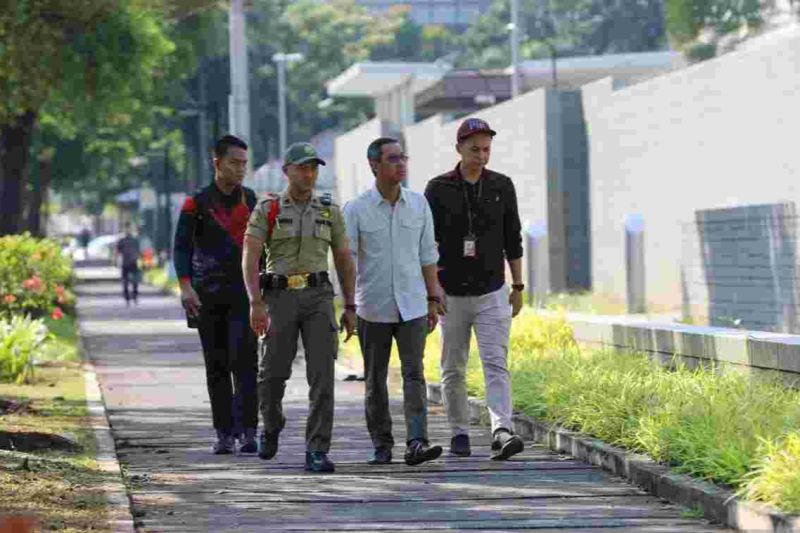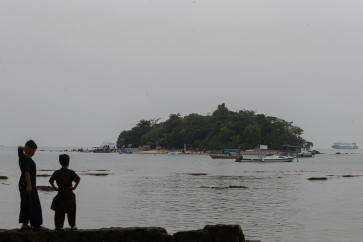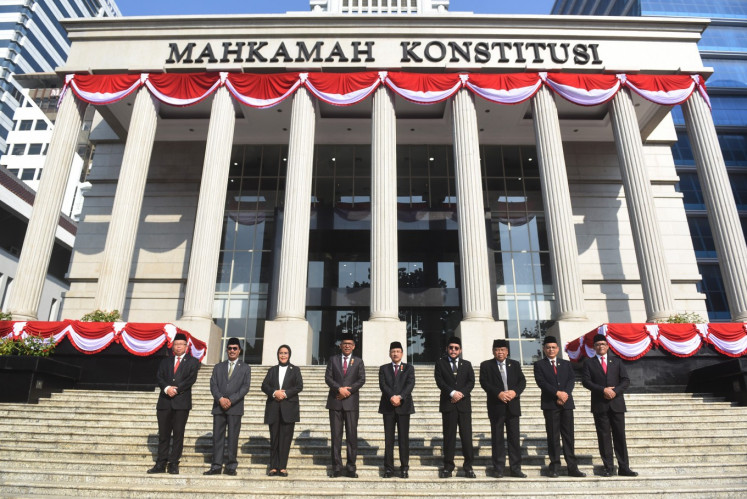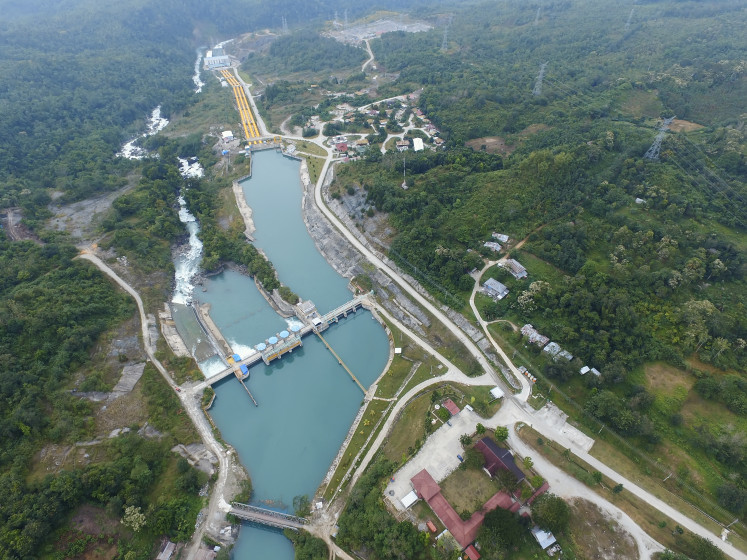Popular Reads
Top Results
Can't find what you're looking for?
View all search resultsPopular Reads
Top Results
Can't find what you're looking for?
View all search resultsRelief in Jakarta as sidewalk in front of US embassy reopens
Change text size
Gift Premium Articles
to Anyone

J
akartans rejoiced last weekend as the sidewalk in front of the United States Embassy compound in Central Jakarta was reopened to the public after more than two decades.
The capital administration removed the concrete barriers and barbed wire fences set up to stop pedestrian traffic along the 170 meter stretch of pavement last weekend, after renewed protests from people forced to step onto the busy Jl. Medan Merdeka to pass by.
The process was witnessed by officials from the Foreign Ministry and the US Embassy in Jakarta. An embassy spokesperson said the decision was motivated by accessibility, safety and walkability considerations.
“We applaud the engaged citizens who elevated this issue and thank our Indonesian partners for improving sidewalk access in front of the US Embassy,” the US mission wrote in a statement on Thursday.
Jakarta’s residents hailed the return of a key portion of the footpath that wraps around the central National Monument (Monas).
Susi, a 34-year-old woman from Menteng, Central Jakarta, said she felt much safer after the sidewalk in front of the US embassy opened.
“I’m no longer worried because I don't have to step down and onto a road with a lot of vehicle traffic. I appreciate the US Embassy for respecting pedestrians’ rights," she said on Saturday, as quoted on the city’s official website.
“Walkways are very important for the public, including for the disabled, so that we may feel safer and more comfortable in our mobility,” she added.
Twenty-five-year-old Rohman from Senen, Central Jakarta, expressed a similar appreciation for the decision.
“I jog along Jl. Medan Merdeka every weekend. I’m happy that the pedestrian blockade is gone. I feel safer now,” he said.
Hazardous path
The US Embassy had closed off the walkway in front of the compound for security reasons in 2002 in response to the Bali bombings, which killed more than 200 people that year.
Jakartans had been seeking to reopen the walkway for years to no avail, but their complaints recently gained traction online.
Pedestrians took to social media to complain about how the closed-off pathway forced them to step onto the road and risk getting hit by vehicles.
The sidewalks along Jl. Medan Merdeka see high foot traffic, with a number important buildings located in the area, such as the iconic Monas, the Jakarta City Hall and the governor’s office, as well as the relatively new National Library building.
The head of the Jakarta-based Pedestrian Coalition, Alfred Sitorus, said last week that sidewalks had to be made available and had to fulfill the criteria set out in traffic laws, which included being accessible to all.
The coalition, he said, had been protesting against the blocked sidewalk since President Joko “Jokowi” Widodo was governor of the capital from 2012 to 2014.
“It’s a public space that should be available to all pedestrians. It’s their right, especially because the area has such high foot traffic," he said, as quoted by kompas.com.
With added visibility on social media, the public protests gained the support of a number of city councilors, whose offices are located just a few blocks from the US Embassy.
Earlier this month, Jakarta City Council deputy speaker Khoirudin said he wanted the sidewalks to be reopened to ensure the safety and comfort of passersby.
“It’s also part of embracing equality, since other embassies do not shut out pedestrians near their own buildings. I hope the US Embassy can respect pedestrians’ rights,” he said.
Another city councilor, Alfred Sitorus of the Indonesian Democratic Party of Struggle (PDI-P), said at the time that the closure was against the law.
“Legally, the walkway is not part of the embassy’s area. It is for pedestrians,” Alfred said.
Responding to the criticism, US Ambassador to Indonesia Sung Kim said on June 6 that the embassy had agreed to reopen the sidewalk.
“We have informed the Indonesian government that the US would welcome the reopening of the sidewalk in front of the Embassy,” he posted on social media.
Acting Jakarta governor Heru Budi Hartono expressed his appreciation for the US Embassy’s decision, saying his administration would revamp the sidewalks to make them more accessible.
“I thank officials from the Foreign Ministry and the US Embassy for their willingness to restore the sidewalk to its original purpose. We will clean the area, trim the trees and revitalize it to make it more beautiful and comfortable for pedestrians,” Heru said in a statement on Sunday.
Since Monday, personnel from the Jakarta Forestry Agency have planted thousands of green aralia along the sidewalk to make it “more aesthetically pleasing” and reduce the impact of climate change, said agency head Bayu Meghantara.
Jakarta’s Bina Marga road works agency also announced plans to install braille blocks on the recently reopened path to guide the visually impaired, matching the sidewalks in the surrounding area.









